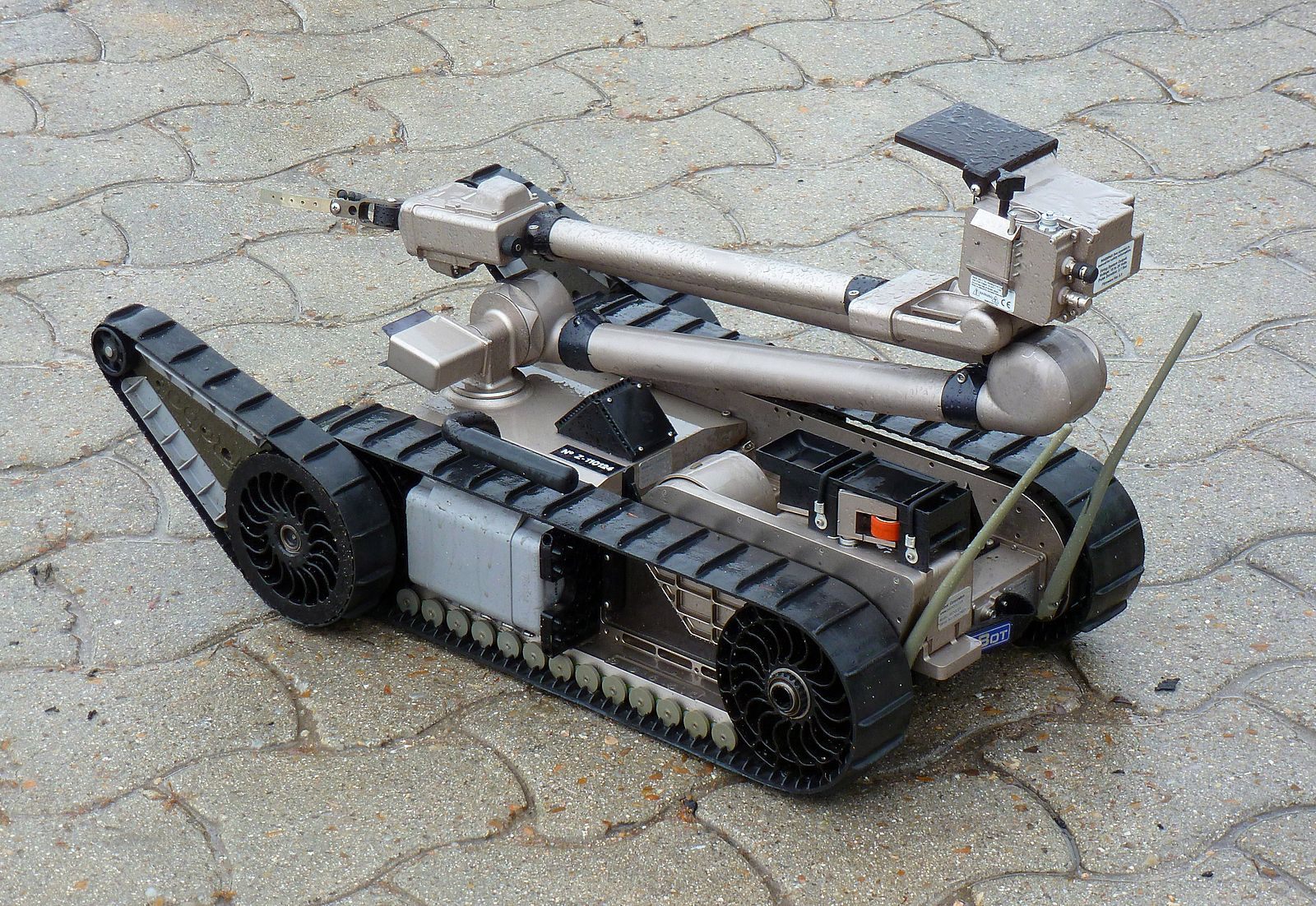Find The Police Robots Near You With This Handy Map
Are you living near a PackBot?

A member of the US Capitol Police maneuvers a bomb disposal robot through Washington D.C. (Photo: Jay Tamboli/CC BY 2.0)
Earlier this month, a robot normally used to defuse bombs made a strange kind of history when it became the first police robot to intentionally kill a target. After a standoff that left five officers dead, the Dallas Police Department repurposed the robot as a weapon in order to blow up suspect Micah Xavier Johnson, who was hiding in a parking garage.
That robot was far from the only one out there. At that time, Atlas Obscura resurfaced a 2015 map from Bard College’s Center for the Study of the Drone showing the number and locations of other surplus military robots owned by federal, state, and local law enforcement agencies around the country.*
Last week, the Center brought their map up to date—and in the process, uncovered some surprising police robot trends.
First of all, 2016 has already been a banner year for police robots. “There were more transfers in the first half of 2016 than in any year previous,” says Dan Gettinger, founder and co-director of the Center. Thus far in 2016, there have been at least 201 instances in which robots joined domestic law enforcement departments. (Although the Center did not detail the overall number of robots transferred, it’s safe to assume it exceeds this, as several robots may be transferred at once.) By contrast, all of 2015 saw 81 transfers. From 2003 to 2010, there were only eleven.
In addition, police departments are now receiving bigger, better robots. In the past, Gettinger says, the model most likely to show up in police stations was the MARCbot IV, a small bomb disposal robot that was originally designed to to search out IEDs in Iraq. Experts think the robot deployed to kill Johnson was likely a MARCbot.
Though this bot is still popular, starting in December 2015, police departments began receiving a lot more of the Packbot510—a more expensive model known for its wide range of uses, including surveillance, vehicle inspections, and explosive detection. “It’s a newer, larger, more capable robot than has been transferred in the past,” says Gettinger.

The PackBot 510, newly popular within police departments. (Photo: Outisnn/CC BY-SA 3.0)
The Center has also looked into robot distribution. While the biggest individual robot hauls went to FBI agencies in San Francisco and Dallas, local California police departments—including the Los Angeles County Sheriff Department, and the Covina and West Covina Police Departments—were close behind. State by state, California has received by far the most robots (272), followed by Texas (125), Arizona (53), Alabama (40) and Ohio (40).
Gettinger doesn’t see these trends slowing anytime soon. For one thing, many IED robots were sent into Iraq and Afghanistan as part of various troop surges, and are no longer needed. “As the main infantry commitment to these countries decreases, you have more and more robots that are just extra,” says Gettinger—meaning they’re likely to keep switching over to domestic police work. For another, the government awarded 42 police robot-related contracts and grants in 2015 — more than ever before.
If you’d like to know more about what your local police robots are up to, there are a few options. Gettinger suggests looking through publicly accessible police data and isolating situations, like bomb threats, where a robot may have been used. More clues might be found in the resources used by bomb disposal teams, like this presentation from the Port of Seattle Police Department.
If you’re thinking of digging deeper and filing a Freedom of Information Act (FOIA) request, J. Patrick Brown, a public records expert at Muckrock, suggests repurposing language from their recent government drone census. He also recommends checking your local police department’s press release archive, Facebook page, or Twitter account. “Often, the first you hear about police tech is when the police are salivating about the possibility of using it,” he says.
*The map is based on data from the 1033 program, which transfers robots and other surplus military hardware from the Department of Defense to local law enforcement agencies, and from public contract announcements. Since law enforcement may also procure robots in other ways, it is not a comprehensive list.
If you find out anything interesting about police robots in your city, let us know at cara@atlasobscura.com.










Follow us on Twitter to get the latest on the world's hidden wonders.
Like us on Facebook to get the latest on the world's hidden wonders.
Follow us on Twitter Like us on Facebook